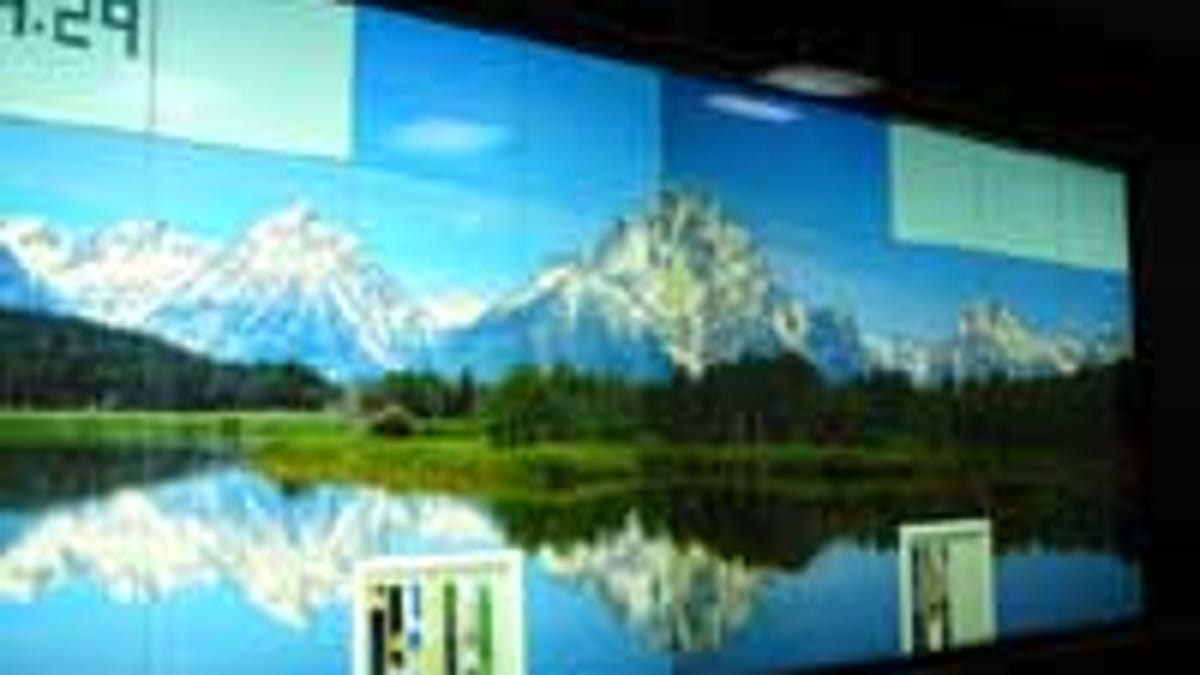TVs of the Future: Panasonic's vision
What will televisions be like in the next 5, 10 and 15 years? Here's some idea of what Panasonic has in mind.

When asked what will be the most significant challenge for Panasonic over the next 10 years, Mr. Toshihiro Sakamoto, Senior Managing Director, President of Panasonic AVC Networks Company replied without hesitation that it was the development of televisions "post plasma".
Although the company is currently building a new plasma display panel plant that will double its PDP production capacity to 11.5 million units by 2008, it is aware that it takes 20 years to bring a new technology to market, said Mr. Sakamoto. He predicted that future televisions would be lighter, thinner, and use what he called self-emitting light sources to enhance picture quality and brightness.
Mr. Sakamoto also said Panasonic was developing more eco-friendly products made from recycled materials and ones with better energy efficiency, both in the product itself and in the production process.
Next year
In his keynote address at CEATEC, Mr. Fumio Otsubo, President of Matsushita Electric Industrial Co., Ltd., the parent company of Panasonic, spoke of IP services delivered through big-screen televisions at the centre of the home.
To realise that vision, Matsushita has recently teamed with four other TV manufacturers in Japan -- Sony, Hitachi, Sharp and Toshiba -- to start a free portal that will link users to Web sites that provide consumer-oriented services, such as news, weather, games and shopping. Users will be able to pay for their purchases with credit cards.
Set to launch in early 2007 under the name acTVila, plans for the joint venture also involve a streaming video-on-demand service.
The companies have the backing of the Japanese government and aim to establish a global standard for the service by making technical specifications publicly available to attract service providers and other overseas TV manufacturers. This TV-centric network services initiative is seen as a move to directly combat efforts from Intel and Microsoft who are pushing a PC-link through TVs to digitally network homes of the future.
Two to three years out
The display model acts as a home network server, with its top level menu providing four "windows" to Entertainment, Security, Communications and Ecology applications. In addition to accessing broadcast content and a video library filed by genre, this TV enables online video chatting and control of the home's Webcam security checkpoints as well as the air-conditioning and lighting systems. Mass production of the product, which also calibrates its surround sound based on the number and location of people in the room, is said to be two to three years away.
In ten years time
Access entertainment, the Internet and home control systems through one interface. Click to enlarge. | The button-free remote is simple to operate. Click to enlarge. |
Items on the Digital Wall, such as a large clock in a simulated children's room, can be dragged by fingertip to any position. The guide shows off its flexibility and responsiveness by kicking a virtual ball across the length of the screen and writing on its the simulated touch-screen chalkboard.
Video tiles can be manipulated as you like. Click to enlarge. | Combine all tiles on wall for one very large image. Click to enlarge. |
In a demonstration of how home shopping might be customised in the future, the colour of a displayed motorised vehicle on the Digital Wall was rapidly changed by a simply tapping on a spectrum of available colours.
Kick the ball across the room. Click to enlarge. | Or write on the chalk board. Click to enlarge. |
Don't like it in gold? Click to enlarge. | Try green. Click to enlarge. |

